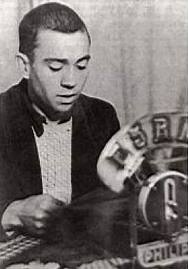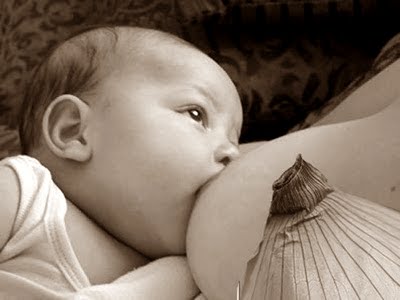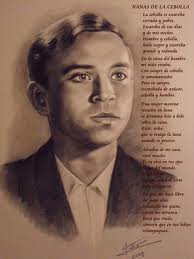Life & works of Miguel Hernandez
Miguel Hernandez was the youngest poet of the Generation of '27. He was also the only one who didn't receive a university education because of the modest situation of his family, and all he knew about literature was self-taught. A strong minded Republican, Miguel Hernandez was incarcerated by the supporters of Franco, and he died in prison at the age of 32.
Miguel Hernandez - Life

Miguel Hernandez was born in Orihuela, Alicante, in 1910. His family worked in the livestock sector, and he tended to the goats from a very young age. He studied in schools in Alicante from 1915 to 1925, when his father forced him to leave school to work full time in the family business, but he studied a bit of law and literature. While looking after the herds, he reads avidly and writes his first poems, which are published in some of the local newspapers
He becomes friendly with the canon Luis Almarcha Hernandez, who lends him books by San Juan de la Cruz, Gabriel Miró, Paul Verlaine and Virgilio among others. His visits to the public library become more frequent and he starts his own literary gathering of sorts with other youngsters from Orihuela. From this moment, books become his main source of education, and he became a self-taught person. his teachers were the great writers of the Golden Age of Spanish literature: Miguel de Cervantes, Lope de Vega, Pedro Calderón de la Barca, Garcilaso de la Vega and, above all, Luis de Gongora.

In 1931 he travels to Madrid, but returns to Orihuela soon. His first book is published in 1933, with the title "Perito en lunas". In 1934 he returns to Madrid, with better luck than he had in his first trip. He's named contributor in "Misiones Pedagógicas" and later he's also contracted as editor of the bullfighting encyclopedia "Los Toros". He also contributes in "Revista de Occidente" and starts a torrid relationship with the painter Maruja Mallo. He befriends Aleixandre and Neruda, and this is the start of his brief Surrealist period.
His poetry becomes more social and clearly shows a political compromise with the poor and disinherited. His childhood friend Ramón Sijé, who had attended his early literary gathering in Orihuela, dies in 1935 and Miguel Hernandez dedicates his "Elegía" to him.
When the Spanish Civil War began, Miguel Hernandez enrols in the Republican side. He travels around Spain with his regiment, and escapes in the middle of the war to marry Josefina Manresa in 1937. The summer of that year he attends the II International Congress of Antifascist Writers which took place in Madrid and Valencia, and he also traveled to the USSR to represent the Government of the Spanish Republic. He returns in October to write "Pastor de la muerte".
His first son is born in December of 1937, but he dies a few months later. Miguel Hernandez dedicates "Hijo de la luz y de la sombra" to him. In 1939 his second son is born, to whom the poet dedicated "Nanas de la cebolla". That same year he writes another book, "Viento del pueblo".

In April, Franco declared the war was over. "El hombre acecha" was being printed and almost the whole edition was destroyed, except for a couple of books that allowed it's re edition in 1981. Miguel Hernandez returns to Orihuela, but the situation was dangerous and he decides to go to Seville through Cordoba and cross to Portugal through Huelva. He was caught by the police and sent to prison. During his jail time, his wife writes to tell him they only have bread and onions to eat, and that is when the poet writes "Nanas de la cebolla".
From Seville he's taken to Madrid where Pablo Neruda manages to get him out. He returns to Orihuela and it captured again. He's taken back to Madrid and sentenced to death in 1940, but some of his intellectual friends intercede in his favor and his death sentence is changed to a sentence of 30 years. In 1941 he was moved to the Adult Reformatory of Alicante, where he fell ill with bronchitis, typhus and consumption. He died on the 28th of March of 1942.
Miguel Hernandez - Works
Although chronologically the author should be part of the Generation of '36, the style of his work and his relationship to the members of the Generation of '27 make him part of this latter group. He was often called the "the great epigone of the group" by Dámaso Alonso. His career as a writer began with his contributions to "El Gallo Crisis", a magazine directed by his friend Ramón Sijé.

His first volume of verses is called "Perito en Lunas" (1934), where every day objects are described with the formal hermetism characteristic of Góngora. However, in other poems of the same period, the poet shows more fluency with words and the beginning of his compromise with more social causes.
In 1934, after publishing his sacramental act "Quien te ha visto y quien te ve y sombra de lo que eras" he started to write what was to become his most important work, "El rayo que no cesa" (1936). Life, death and love are the central topics of a book composed mainly of sonnets, although it also has some elegies, like the one to Ramón Sijé, considered one of the most important elegies of all the Spanish literature.
During the Spanish Civil War, he wrote was is called "war poetry": his republican faith was expressed in a series of poems collected in the book "Viento de pueblo" (1937), which also has "La cancion del esposo soldado", dedicated to his wife. It's also during the war that he writes "El hombre acecha" (1939), that shows his tragic vision of the Civil War, and several dramatic texts that were published with the title "Teatro en la guerra" (1937).
While in jail he wrote "Cancionero y romancero de ausencias" (1938-1941) in which he uses traditional forms, typical of the folkloric Castilian poetry, and a simple and concise style to transmit the deep pain he felt from the separation from his wife and children, and the anguish the devastating effects of war caused him.

